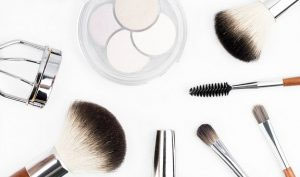 Have you ever been curious about how makeup is actually made? Cosmetics are a huge business. Just in North America, around $35 billion is spent every year on lipstick, foundation, mascara, and other makeup.
Have you ever been curious about how makeup is actually made? Cosmetics are a huge business. Just in North America, around $35 billion is spent every year on lipstick, foundation, mascara, and other makeup.
Obviously, the art of artifice is a big seller. However, the past popularity of mercury and lead used in makeup highlights why the U.S. FDA (Food and Drug Administration) plays some role at least in regulating the purity and safety of cosmetics. Today, ingredients are used by manufacturers that are judged safe for coming into contact with humans. However, what is considering to be “the right makeup?”
To begin with, consistency is something that consumers expect. For example, the last couple of swipes from a lipstick tube need to look as “Cinnamon Sugar” brown as those first couple did. Of course, consumers consider a number of different factors when they are choosing their makeup.
Does it wipe off everything or will it continue to look fresh? Does it run or is it resistant? How long does it last? In order to achieve these ambitious goals, cosmetic manufacturers developing closely guarded formulation have spent years. In addition, they have made major investments in cosmetic manufacturing equipment that can produce very safe, well-blended cosmetics that has the proper mix of ingredients, stability, scent, color, and consistency.
How Foundation Is Made
Let’s start with foundation. Although there are mineral-based, dry versions of this type of cosmetic, the most familiar is perhaps liquid foundations. Manufacturers start with pigments and oils, and maybe some fragrance, that all that to be mixed up very well so that all of the ingredients are blended together.
This “blending well” part of the equation is where having the right industrial equipment, such as Flux Pumps is a major factor. In order to achieve consistent, smooth color, texture and other characteristics, it is critical for all of the ingredients to undergo some type of mixing that cannot be achieved with a household appliance, tool, or blender. Some products today are only possible to make using submicron, advanced processing. This process involves constituents being reduced in size to tiny particles. One manufacturer that excels at the technology is Quadro.
Depending on what the final product is, sophisticated mixing machines are relied on by cosmetics manufacturers that can perform such challenging tasks as:
- Mix stabilizers, rheology modifiers, and thickeners
- Blend liquids of various viscosities
- Dissolution of powders
- Disintegration of solids
- Produce stable emulsions
- Hydration of suspending and thickening agents
In addition, it is essential for all of the processes to occur under completely hygienic, consistently reproducible, and controlled condition. After all, safety and health are what’s at stake, and close attention is paid by the FDA.
How Mascara Is Made
In order to make the eyes mascara that is more dramatic, is used for adding definition, thickening, color, and length to eyelashes. The most popular color is jet black. In some countries, certain potentially toxic substances like tar and coal are used for this.
In the US and other places, carbon black, which is a safer alternative, is relied on. To achieve other colours like brown, pigments like oxide, iron, and other minerals might be added.
Different formulas and methods are available. However, in order to produce mascara, an emulsion is created by many cosmetic manufacturers that consist of pigments, waxes, various oils, and water. Since it used close to the eyes, it is crucial that no irritants or contaminants be contained in mascara. As anyone who cooks knows, it is challenging to blend water and oil.
Sophisticated mixing technologies are used by modern cosmetics for achieving stable emulsions. There are very small particles contained in smooth mixtures of both oils and water, with one dispersing uniformly inside of the other.
Other Makeup Products
Some of the other popular makeup products, like lipstick, are made using similar process – various preservatives, antioxidants, pigments, oils and waxes are used in order to prevent the final product from spoiling.
Many different FDA-approved products can be used, ranging from metallic oxides, to FD&C Red. NO. 40, plant-based annatto, to good old carmine (a very deep red produced by cochineal insects). Since lipstick may be ingested, close attention must be paid at all times to the ingredients’ safety.
There are many companies like Flux Pumps that provide leading industrial mixing equipment to the leading cosmeceuticals and cosmetics manufacturers in the world.





